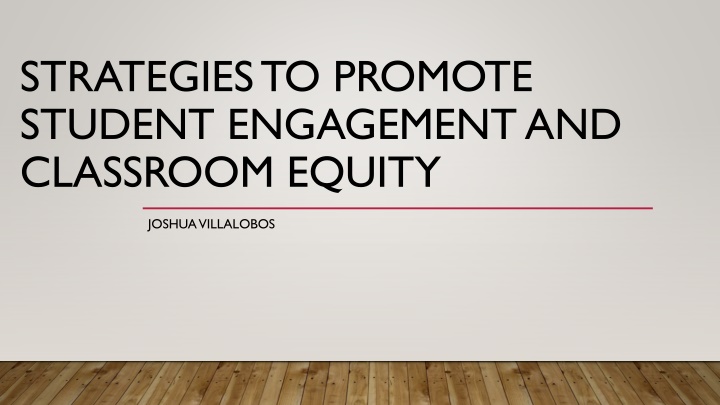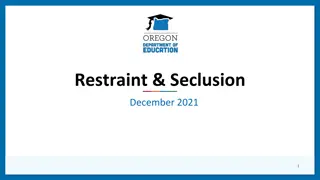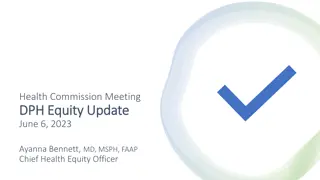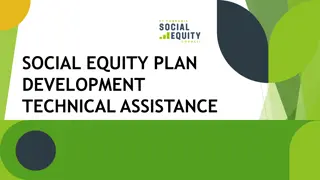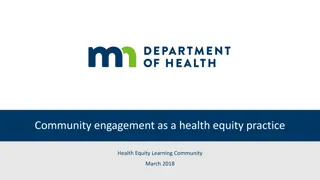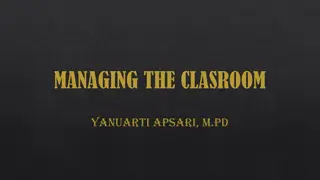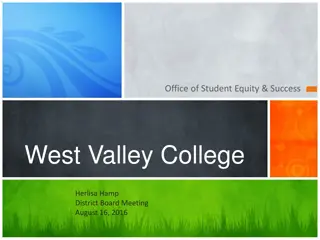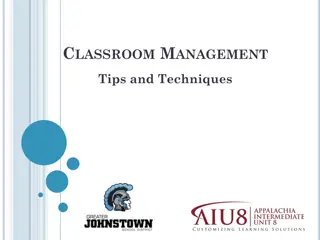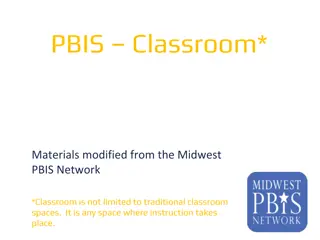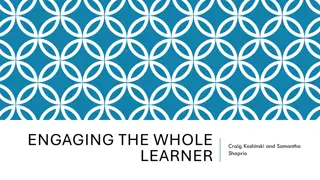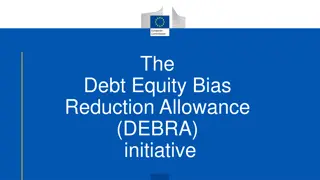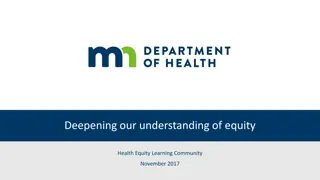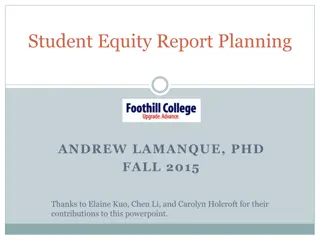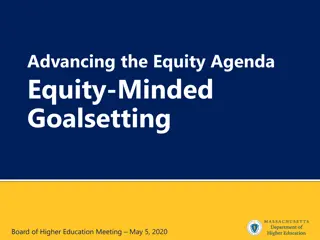Effective Classroom Strategies for Student Engagement and Equity
Explore strategies such as increasing wait time, implementing minute papers, utilizing think-pair-share activities, and fostering inclusive hand-raising techniques to promote student engagement and classroom equity. These approaches aim to enhance learning outcomes, encourage student participation, and create a supportive learning environment for all students. Incorporating these strategies can lead to increased student confidence, improved responses, and higher test scores.
Download Presentation

Please find below an Image/Link to download the presentation.
The content on the website is provided AS IS for your information and personal use only. It may not be sold, licensed, or shared on other websites without obtaining consent from the author.If you encounter any issues during the download, it is possible that the publisher has removed the file from their server.
You are allowed to download the files provided on this website for personal or commercial use, subject to the condition that they are used lawfully. All files are the property of their respective owners.
The content on the website is provided AS IS for your information and personal use only. It may not be sold, licensed, or shared on other websites without obtaining consent from the author.
E N D
Presentation Transcript
STRATEGIES TO PROMOTE STUDENT ENGAGEMENT AND CLASSROOM EQUITY JOSHUA VILLALOBOS
WHAT VS HOW Higher education communities often focus on issues of what students need to learn and less on how students learn. Structure Matters: Twenty-one Teaching Strategies to Promote Student Engagement and Cultivate Classroom Equity- Tanner, K.D. Life Science Education Vol. 12, 322-331 Fall 2013 everybody is a genius. But if you judge a fish by its ability to climb, it will live its whole life believing it s stupid - Albert Einstein
WAIT TIME Wait time between questions and instructor response is on average ~1.5 sec. If wait time is increased to 5 secs: The length of and correctness of their response increases The number of I don t know or no answer responses decreases The number of volunteered and appropriate answers by a large number of students increases Test scores increase
TIME TO WRITE Minute Paper- Allow students to capture their thoughts on the days lesson and give you an assessment on how effective you were Students write at the end of the class period for 1-3 minutes on a concepts they learned or a questions they have on the topic discussed in class. Allows some students the confidence to participate in class without having to speak Often these are difficult at first but students begin to learn how to answer questions more effectively in the long run
THINK-PAIR-SHARE The simplest way to give all your students in a classroom opportunities to share information and to participate Step 1: Pose a question how are the three branches of government related? Step 2: Give one minute for self reflection Step 3: Have students pair with a neighbor (left or right) and discuss their answers together for 2-3 minutes Step 4: Paired discussion may or may not be followed by whole group discussion
HAND RAISING No one is raising their hands?! Avoid making the classroom an open forum for discussion Establish early on a class culture where any one can be called on Don t make being calling on feel like a penalty Make the process of asking question to a random student transparent Popsicle sticks student index cards
MULTIPLE HANDS, MULTIPLE VOICES Ask for hands and multiple voices to respond to class questions I m going to pose a questions and I d like to see at least three hands who would like to share their ideas. I won t call on anyone until I get three volunteers. Establish early on a class culture where any one can be called on Don t make being calling on feel like a penalty Make the process of asking question to a random student transparent Popsicle sticks student index cards
ASK OPEN ENDED QUESTIONS Questions should be phrased to encourage meaningful answers and not single-answers Open ended questions typically begin with How , Why or Explain
ESTABLISH CLASSROOM NORMS Its critical to establish your expectations on learning, education, and behavior om day one. What an instructors chooses to do on day-one of class sends a strong message to students on you (an them) on your teaching style. Norm statement can be: Everyone in this room has something to learn All ideas and answers will be treated with respect Everyone is expected to support their fellow classmates when challenges arise in class
